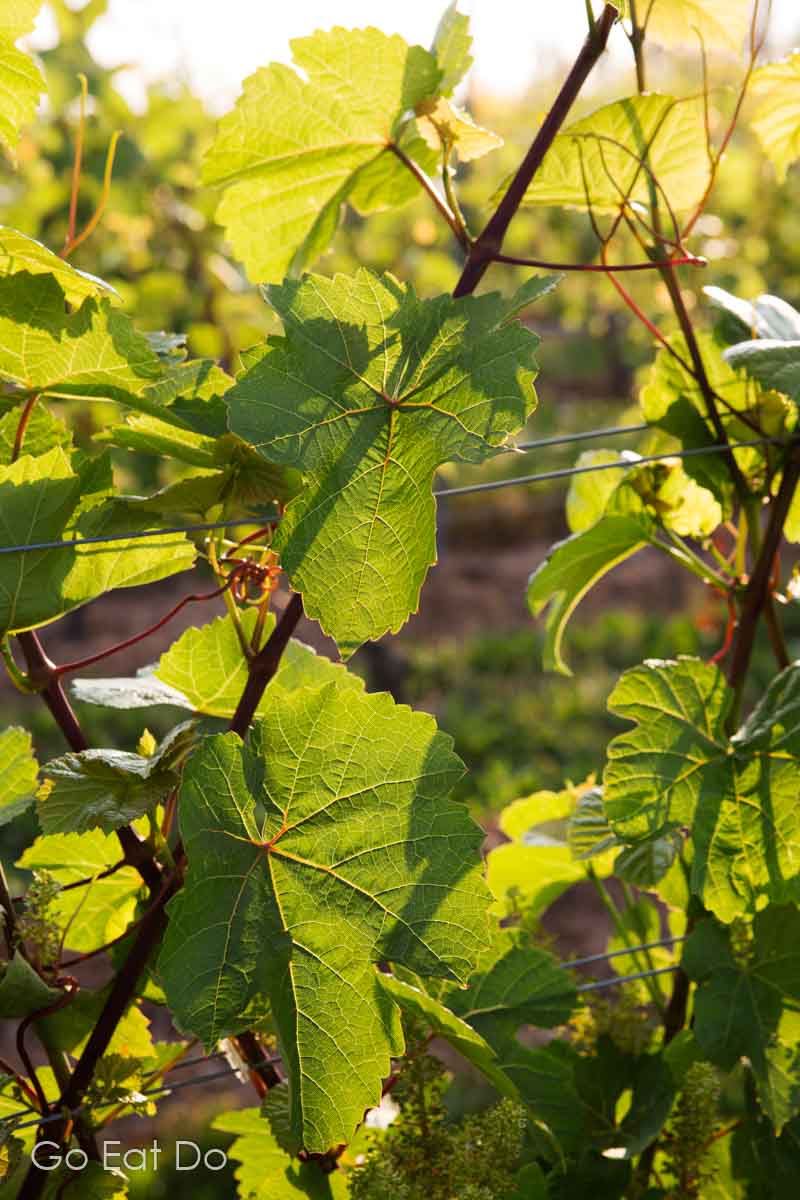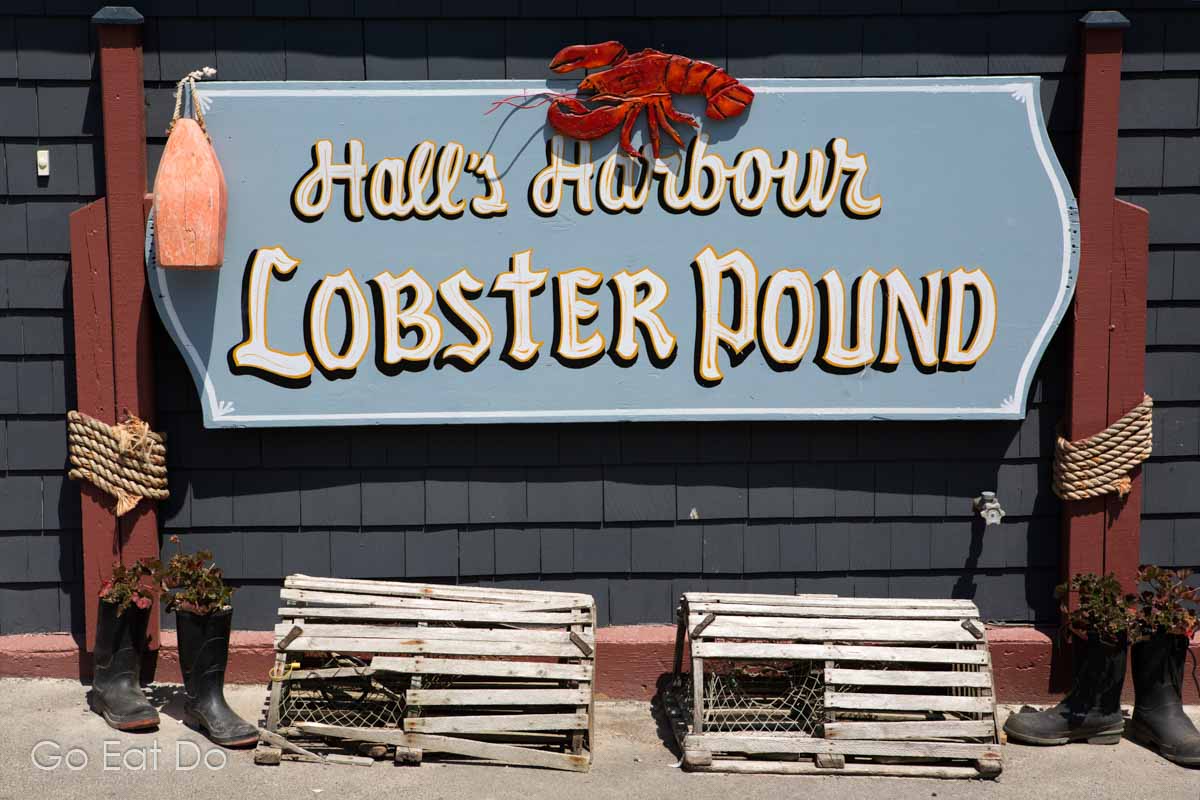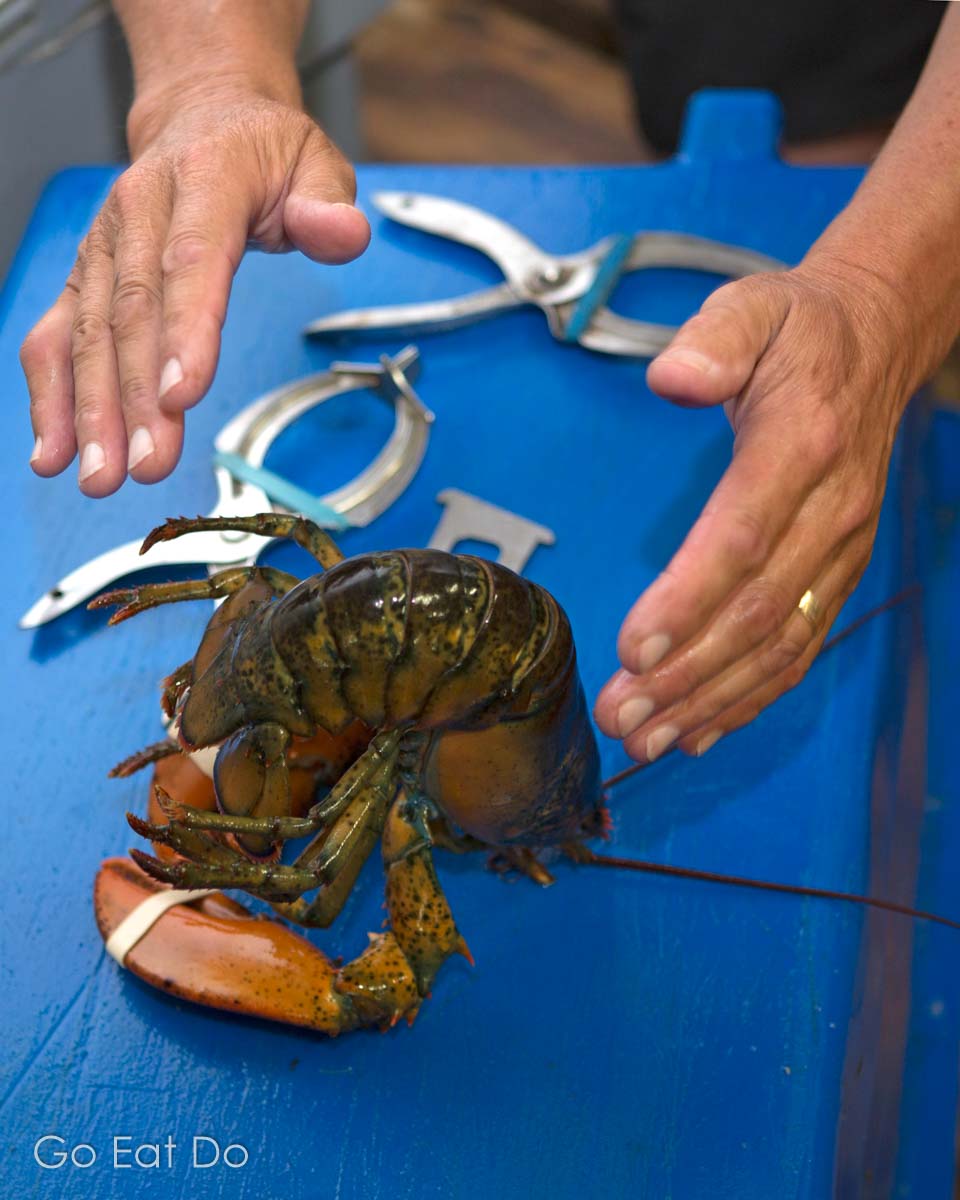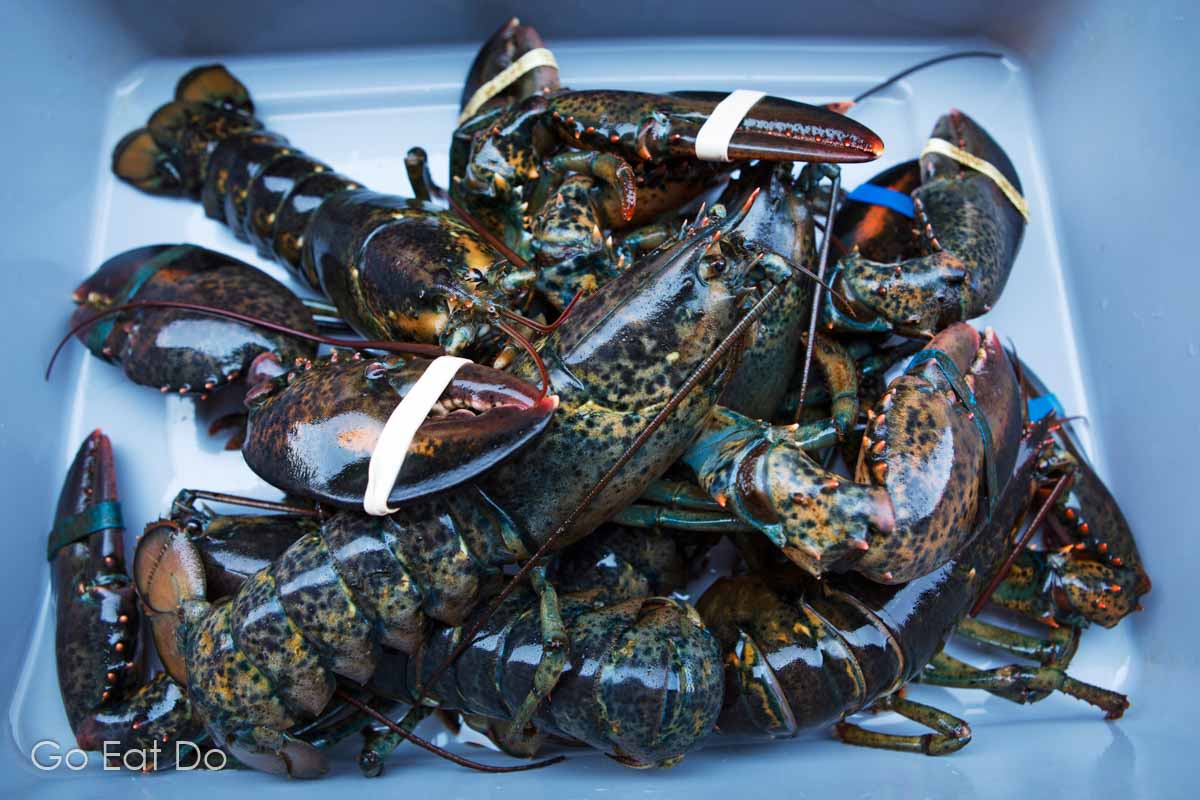Stuart Forster looks at six top experiences and places to visit while exploring Nova Scotia beyond Halifax.
Disclosure: This post has been paid for by Tourism Nova Scotia. Some of the links below and banners are affiliate links, meaning, at no additional cost to you, I will earn a commission if you click through and make a purchase.
Travel may not be possible at present but that doesn’t prevent us from dreaming and planning future trips and holidays.
Canada’s vastness is one of the factors making it such a varied and rewarding travel destination. Road trips are a popular way of exploring Canadian landscapes, including the coastlines of the Maritime Provinces.
Exploring Nova Scotia
Hiring a car or motorhome (usually known in North America as an RV – short for recreational vehicle) is a rewarding way of exploring Nova Scotia. A self-driving holiday provides the freedom to pause to appreciate points of interest and beauty spots whenever you want.

The country’s second smallest province (nearby Prince Edward Island is the smallest) would fit into the United Kingdom roughly five times. It has several scenic driving routes ideal for enjoying during leisurely road trips. Setting aside a couple of weeks means it’s possible to see many of the most beautiful places in Nova Scotia and factor in a couple of days in Halifax.

Halifax Stanfield International Airport
Nova Scotia’s provincial capital is a 35-kilometre (22-mile) drive from Halifax Stanfield International Airport. For ideas about things to do in Halifax, see my post entitled a guide to 48 hours in Halifax, Nova Scotia.

Inevitably, some of the destinations listed below are well-known. Some have an air of being off the beaten track. Planning an itinerary that includes stops at popular attractions and less well-known spots will provide a varied overview of the province.

1 – Explore the Annapolis Valley
UNESCO added the Landscape of Grand Pré to its list of World Heritage Sites in 2012. It is on the edge of the Annapolis Valley, a region whose vineyards have been winning recognition by wine lovers in recent years.

View the Landscape of Grand Pré
Pause while driving along Old Post Road to appreciate the beauty of the landscape. Formerly marshy, it’s been transformed into rich agricultural land. Careful water management, via sluices and dykes, was a key factor.

Acadians of French descent settled in this region in the 17th century. You may spot roadside flags celebrating Acadian heritage. The red, white and blue tricolours resemble French flags with the addition of a five-pointed yellow star in the upper part of the blue.

Visit Grand Pré National Historic Site
The Grand Pré National Historic Site tells the story of the region’s settlers and of the brutal Acadian expulsion in the mid-18th century. New England Planters, settlers from New England, were subsequently invited to farm the land.

Wolfville overlooks the Minas Basin and is a lovely base for exploring the region. The Blomidon Inn, a B&B in a restored late-19th century mansion built for a wealthy sea captain. The property has rooms with four-poster beds.

Several wineries in the Annapolis Valley open their doors to casual visitors for tastings. Booking a wine tasting tour removes the need for one of your party to be the designated driver.

Insider tip: Reserve a table at the Domain de Grand Pré’s highly regarded Le Caveau restaurant to dine on dishes accompanied by wines produced on the estate. The emphasis in on locally sourced ingredients including scallops and lobster. It’s an idea for a weekend brunch if you plan on staying in the area.

Who will enjoy this? Travellers with a love of history and people who appreciate wine.
2 – Dine at Hall’s Harbour Lobster Pound
Lobster fishing provides for many Nova Scotia families. Lobsters landed by Nova Scotian boats are exported live to markets and restaurants around the planet. If you enjoy seafood, what could possibly top a lobster dinner featuring a locally landed crustacean?

Pre-book a tour at Hall’s Harbour Lobster Pound to gain insights into the lobster fishing industry. That includes learning how to differentiate between male and female lobsters. Seeing where the creatures are stored after landing is also part of the tour.

Did you know that lobsters’ crusher claws are powerful enough to shatter mussel shells? This explains why they’re bound upon being caught. It reduces the likelihood of fisherfolk being nipped and injured.
Pick a lobster from the tank, pull on a bib and sit down in the restaurant to taste a lobster dinner.

The harbour opens onto the Bay of Fundy, the body of water which experiences the world’s highest tides. Don’t be surprised to see it drained at low tide.

Insider tip: Order a side of lobster poutine (chips smothered in gravy loaded with chunks of lobster meat) to sample a Nova Scotian twist on Quebec’s most famous comfort food.

Who will enjoy this? Foodies who appreciate understanding what they eat and the provenance of ingredients.

3 – Walk on the ocean floor at Burntcoat Head
The Bay of Fundy is famed for having the world’s highest average tides. Measurements recorded at Burntcoat Head in the mid-1970s resulted in it entering The Guinness Book of Records. The differentiation in water level between low and high tide was recorded at a remarkable 47.5 ft (14.50 metres).
Burntcoat Head Park looks out onto the Minas Basin. When the tide ebbs it’s possible to step out onto the ocean floor and view rock pools. Walking trails are a way of exploring the Acadian Forest.
The lighthouse within the park tells the story of its predecessor, the Fundy’s prodigious tides and provides insights into the region’s natural history.
Sedimentary rocks in this part of Canada are renowned for being rich in fossils. Tidal erosion frequently reveals new finds.

Dining on the Ocean Floor
Dining on the Ocean Floor has proven popular in recent years. You can join local foraging expert Jonathan Newell to seek out wild ingredients before sitting down to a three-course dinner served outdoors. Featuring regional ingredients, the meal is paired with Nova Scotian wine and craft beer.
Insider tip: Find out more about the region’s tides at the Fundy Tidal Interpretive Centre at South Maitland.
If you’re into geology, it’s likely that you’ll also appreciate visiting Joggins Fossil Cliffs near Amherst. Guides lead summertime tours of the beach from where you can view exposed, stratified rock. Joggins Fossil Centre is open from July into September. The site’s importance in understanding the evolution of life during the area of prehistory known as the Coal Age resulted in UNESCO inscribing Joggins Fossil Cliffs as a World Heritage Site in 2008.

Who will enjoy this? Lovers of natural history and outdoor spaces.

4 – Ride a ferry to Long Island
No, not the famous Long Island in New York! A 24-hour ferry service crosses the Petit Passage, the channel separating Tiverton and Nova Scotia’s Long Island.
Ocean Explorations Zodiac Whale Cruises is based within easy walking distance of the East Ferry’s dock. Biologist Tom Goodwin leads the whale-watching tours in an open-topped Zodiac boat. You’ll be asked to don a waterproof survival suit before heading out to sea. Zipping across the ocean’s surface in the powerful vessel is a thrilling experience.

Whale watching in Nova Scotia
I found Tom’s insights into whales and other creatures inhabiting the Bay of Fundy fascinating. Observing and photographing a humpback whale proved the highlight of the cruise.
You can participate in whale-watching cruises departing from harbours across Nova Scotia. Tom’s obvious passion for marine wildlife and the environment and willingness to share his knowledge made my time with him memorable.
Approximately 160 billion tonnes of seawater flows into the Bay of Fundy with each incoming tide. That water brings a rich supply of food for creatures at the top of the food chain. This is a factor in explaining why whales are commonly spotted in Nova Scotian water.

Insider tip: Order a dish featuring Digby scallops, which are famed for their quality and flavour. The Digby Scallop Days festival, held in August, celebrates the scallops and the fisherfolk who harvest them.

Staying at Digby Pines Golf Resort and Spa
Reserve a table and sample scallops during dinner at Churchill’s Restaurant and Lounge, part of Digby Pines Golf Resort and Spa.

Canadian course architect Stanley Thompson designed the resort’s 18-hole course.

Who will enjoy this? Fans of nature documentaries and keen photographers will appreciate opportunities to see whales breaching.

5 – Stroll at Blue Rocks
Blue Rocks is a fishing village near Lunenburg. Fingers of blue slate jut into the water.
Walking along the shoreline means opportunities to breathe in the sea air while listening to ocean water lapping against the rocks.

Nearby Lunenburg is a UNESCO World Heritage Site. Lunenburg’s Old Town is set out on a grid pattern and is regarded as the best surviving example of a planned British colonial settlement in North America.
If you enjoy craft spirits pop into the Ironworks Distillery to pick up supplies. The micro-distillery operates in premises that were formerly a marine blacksmith’s base of operations.

The Fisheries Museum of the Atlantic is located by Lunenburg’s waterfront. Open from mid-May into October, the attraction tells the story of fishing in the region. That includes the story of the Bluenose, the racing schooner and fishing ship that won the International Fisherman’s Cup in 1921. The vessel is embossed onto Canadian 10-cent coins.

Take your pick of the many places to eat in Lunenburg. Lincoln Street Food is a relaxed, modern restaurant. The Grand Banker serves up seafood overlooking the waterfront.

Insider tip: Visit Blue Rocks late in the day to experience its tranquil vibe.

Who will enjoy this? Colourful boats, rustic houses and fishing shacks have long made Blue Rocks a popular destination for artists and photographers.

6 – Board a replica of Hector
The Hector Heritage Quay is at Pictou. Alongside it stands a meticulously crafted replica of the Hector, a wooden sailing ship that berthed at Pictou in 1773.
The ship transported 189 people from the Scottish Highlands to settle in Nova Scotia. Standing aboard the vessel it’s tricky to imagine how people would have felt during that cramped Atlantic crossing.

That crossing by the Pictou marked the beginning of a wave of Scottish settlement in Nova Scotia. The Latin name of the province translates into English as ‘New Scotland’. Pictou is nicknamed ‘The Birthplace of New Scotland’.
Want to see tiny lobsters? The nearby Northumberland Fisheries Museum has a lobster hatchery that conveys the crustacean’s lifecycle.

Insider tip: If you enjoy cooking, book a cooking experience with Alain Bossé, an ambassador for the region’s cuisine. Known as The Kilted Chef, Pictou-based Alain offers cookery experiences. Alain presents live cooking demonstrations on The Kilted Chef Facebook page.

Who will enjoy this? Maritime heritage enthusiasts are likely to appreciate Pictou.

Exploring Nova Scotia video
Got 10 minutes to spare? Check out my YouTube video about exploring Nova Scotia beyond Halifax:
Map of Nova Scotia
Zoom into the map to view destinations in Nova Scotia:
Questions about Covid-19 and travel
Planning future travel? Head to the Nova Scotia website to view frequently asked questions about the coronavirus (Covid-19).
You’ll find answers to questions about regulations for self-isolation, restrictions on travel to Nova Scotia, where face masks must be worn and many more.

Canada’s Electronic Travel Authorization (eTA)
Most United Kingdom passport holders flying to Canada for leisure or business require an Electronic Travel Authorization (eTA) to enter the country. Some people need visas. Once approved, eTAs are valid for up to five years.
Apply for your eTA via the official Government of Canada website prior to booking travel. Don’t leave it until you’re at the airport as the approval process can take several days, sometimes requiring supporting documentation.
Be aware: Any site charging more than CAD$7 to process an ETA application is not the official Government of Canada website.

Flying to Nova Scotia
Air Canada’s direct flights from Halifax to London Heathrow (LHR) take approximately five hours and 55 minutes.
Westjet operates flights to Nova Scotia from London Gatwick. Direct seasonal services (April into October) operate from Dublin and Glasgow.
Transfers to Halifax Stanfield International Airport (YHZ) are possible from the likes of Toronto Pearson Airport (YYZ) and Montréal-Pierre Elliott Trudeau International Airport (YUL).

Nova Scotia holidays
Canadian Affair, Canadian Sky and Frontier Canada count among operators offering holidays in Nova Scotia from the United Kingdom.
Booking your own flights, accommodation and transport is also an option.
Search for accommodation in Nova Scotia via Booking.com:
Booking.com

Books about Nova Scotia
Thinking about exploring Nova Scotia while on holiday. You may find the following books worth reading:
Chloe Ernst is the author of Scenic Driving Atlantic Canada:

The Bradt Guide to Nova Scotia is packed with insightful information:

Enjoy history? Lucile H. Campey is the author of After the Hector: The Scottish Pioneers of Nova Scotia and Cape Breton, 1773-1852:


Further information
View the Nova Scotia website for more ideas about things to do in Halifax and elsewhere in the province.
The Destination Canada website also has information about tourism attractions in Nova Scotia.
Stuart Forster, the author of this post, was presented with the 2017 British Annual Canada Travel Award (BACTA) for Best Online Content. He is available for editorial and commercial writing commissions.
Enjoy this post? Check out my recent post about travel photography in Nova Scotia. Photos illustrating this post are by Why Eye Photography.
If you enjoyed this post why not sign up for the free Go Eat Do newsletter? It’s a hassle-free way of getting links to posts on a monthly basis.
‘Like’ the Go Eat Do Facebook page to see more photos and content.




